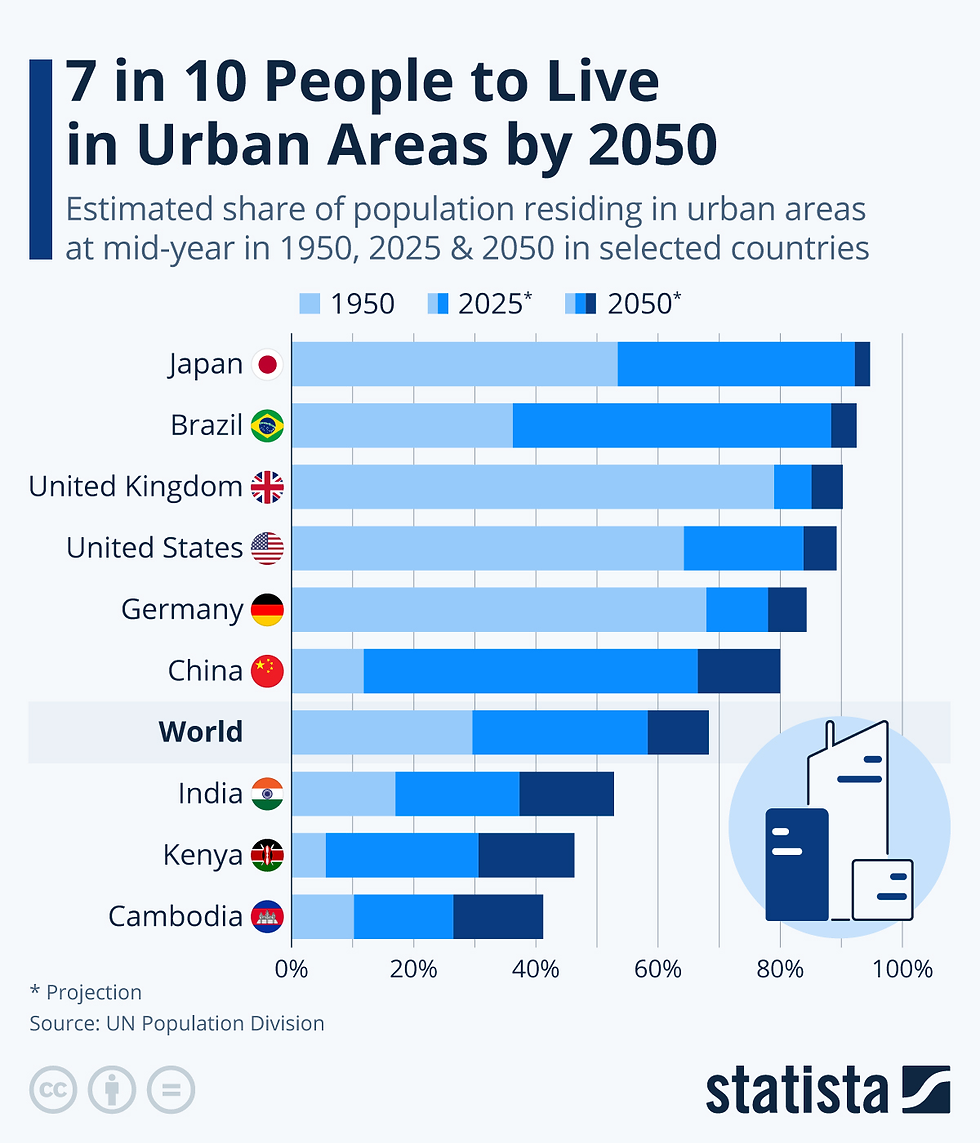7 in 10 People to Live in Urban Areas by 2050
- raquelasg7
- Aug 24, 2024
- 2 min read
This article is published in collaboration with Statista
by Anna Fleck
Seven in ten people will live in urban areas by 2050, according to predictions by the UN Population Division. That’s up from just three in 10 in 1950.
The following chart looks at a small selection of countries from around the world to highlight some of the patterns expected in the future. Of these, China is expected to see the greatest percent change over the 100 year span, increasing from 11.8 percent of the country living in urban centers in 1950, up to 80 percent in 2050 - a difference of some 68.2 percent. This has partly been driven by its rise of urban manufacturing and service sector jobs.
Japan, Brazil and the United Kingdom are among the group of countries expected to have upwards of 90 percent of their populations living in urban areas by 2050. As this chart shows, the UK was highly urbanized fairly early on, largely due to its early industrial revolution and the culture of people living in towns. It’s a similar story for other countries in Northern and Western Europe, which are forecast to have just below 90 percent of their populations living in urban areas by that time. In Southern Europe, the forecast is an average of 82.1 percent, while Eastern Europe is expected to be slightly lower at 79.4 percent. Meanwhile, in the United States, 83.7 percent of people are estimated to be living in urban centers in 2025, set to rise to 89.2 percent by 2050.
There are many reasons for urbanization. These can broadly be understood as 'push factors', which could include being forced to leave a rural area due to natural disasters or agricultural automation and land consolidation leading to fewer rural labor jobs, while 'pull factors' may look more like better employment and education opportunities or an interest in a different lifestyle.
The impacts of a changing climate are an important factor too, as some areas will become increasingly uninhabitable such as at the equator or along coastlines. This was highlighted in a recent study, which indicates that some 13 million people could be forced to move in the United States by 2100 due to rising sea levels.
Urban growth is by no means universal though, with some cities seeing population decline. Read more on the topic here.
Start leaning Data Science and Business Intelligence tools:
createandlearn#analytics#dashboard#finance#accounting#tableau#powerbi#excel#sales#datascience#businessintelligence





























Comments